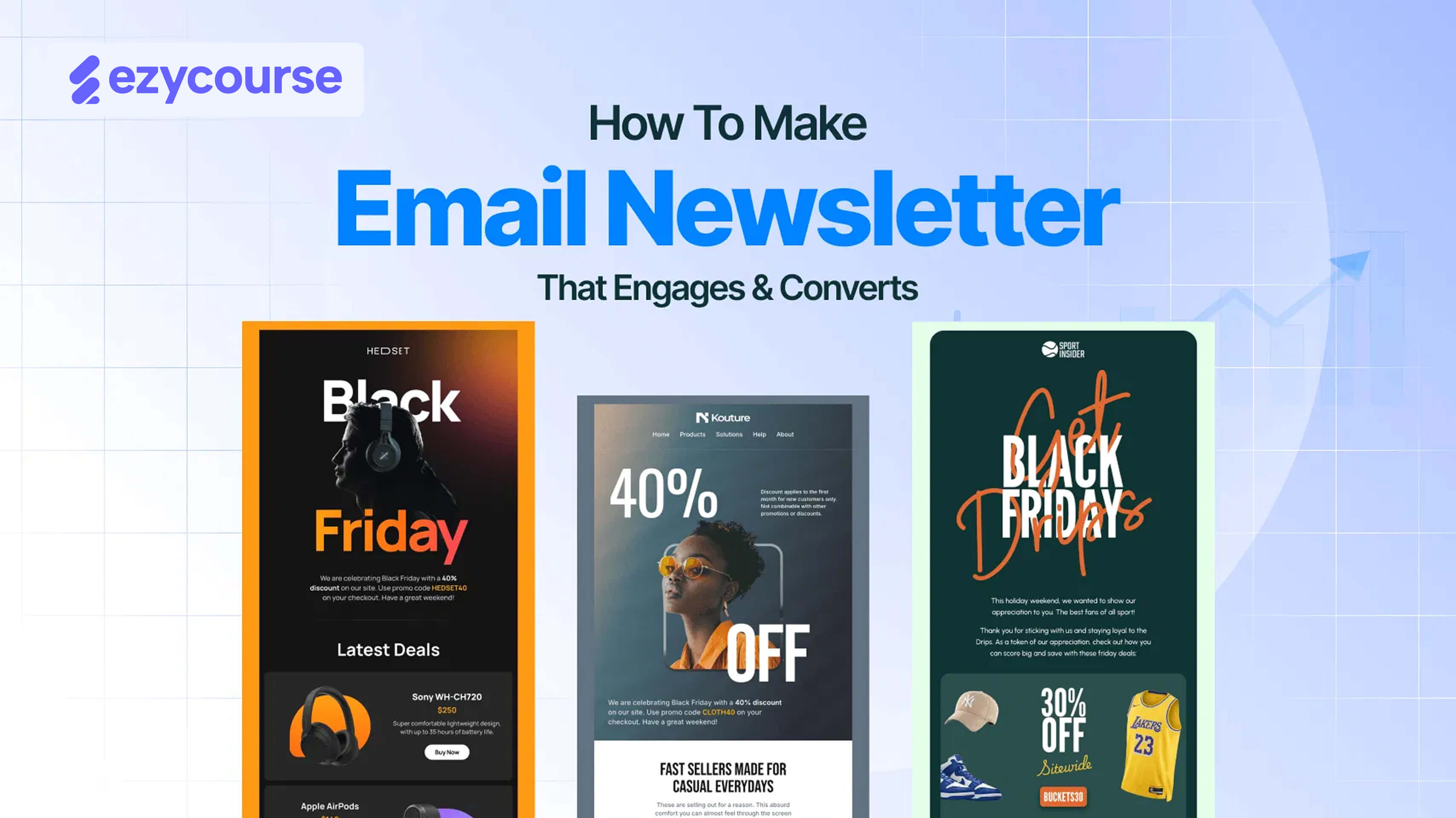Creating an email newsletter that catches your reader’s eye and produces results doesn’t have to be complicated.
Globally, 333 billion emails are sent and received each day in 2022. This number is set to reach 392.5 billion by 2026. It's therefore essential to make a good impression.
Here, your first step should be to understand your audience's needs and preferences. Use engaging visuals and tell a story that resonates with them. Keep your content clear, concise, and purposeful. Don’t forget a strong call to action.
So, have you thought about upgrading your email marketing?
Let's discuss the strategies on how to make an email newsletter that your readers can't wait to read.
Email Newsletter: What Is it?
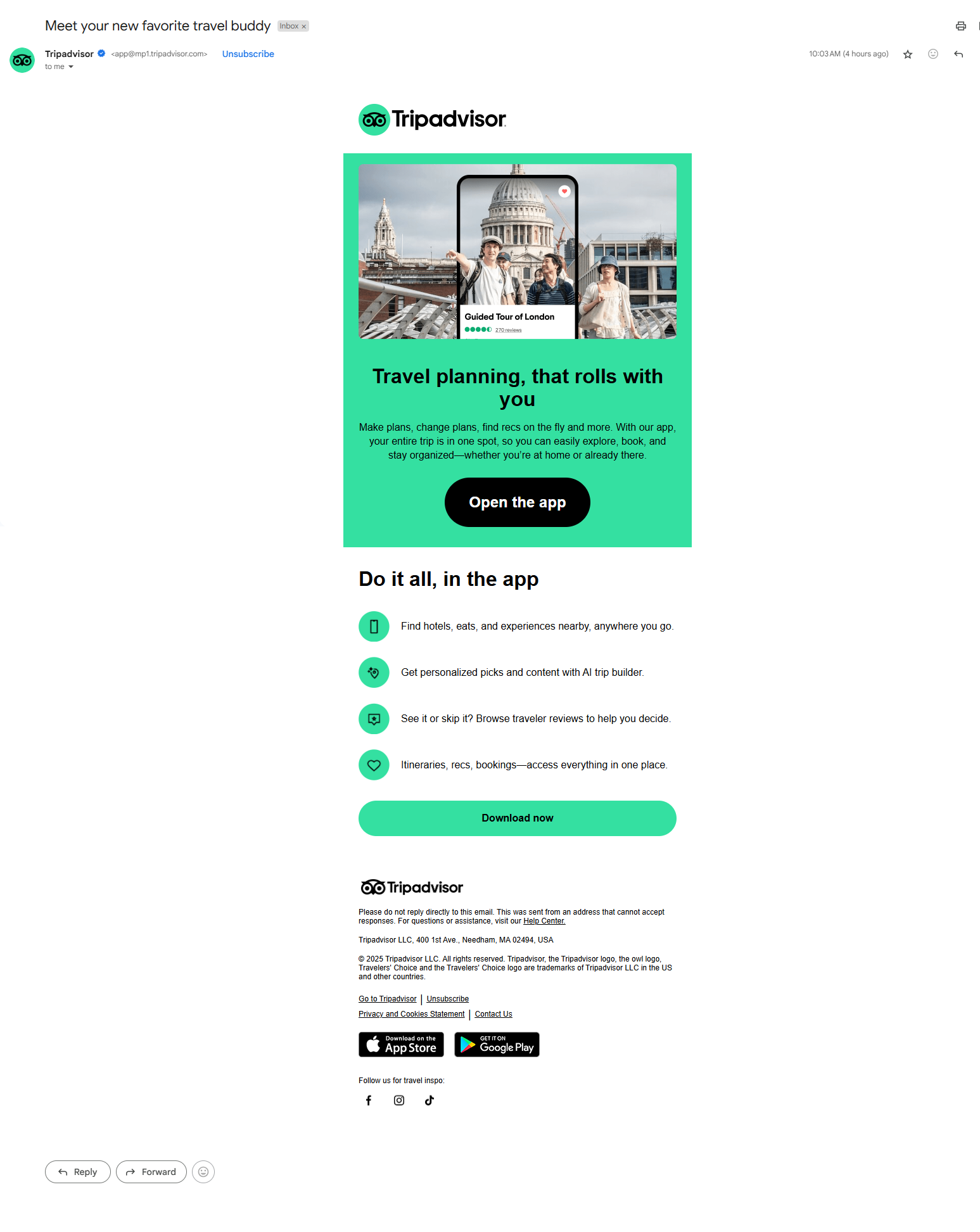
An email newsletter is defined as an email sent on a regular basis to clients who have signed up to receive updates, news, or promotional materials. Email marketing, on the other hand, offers a more personalized approach.
Let’s take a moment to imagine yourself scrolling through your emails while sipping coffee.
You receive a message from your favorite bookstore with a list of the hottest thrillers and a 10% discount for your next order. Then you explore and maybe even purchase a book. That is the power of email marketing; it is personal, engaging, and valuable.
Now, Let me surprise you- email marketing is booming. $36 for every $1 spent (Litmus). By 2026, 4.73 billion people will be using email (Statista). On a regular basis, social media brings new algorithms, but emails sent directly to inboxes ensure that messages are read. |
Here are the key elements of a successful email newsletter:
Branding & Design: Consistent branding and mobile-friendly design.
Subject Line & Preview Text: Catchy and engaging to increase open rates.
Valuable Content: Provide useful and relevant information.
Call to Action (CTA): Clear direction on what to do next.
Segmented Lists: Target content based on subscriber behavior.
Engagement Opportunities: Encourage interaction through polls or feedback.
Unsubscribe Option: Easy to opt out or change preferences.
Social Media Links: Drive traffic to your social profiles.
These elements help create newsletters that engage, inform, and drive action from your audience.

8 Things to Consider Before Creating an Email Newsletter
Starting a newsletter is not just about hitting send on an email.
Usually, a newsletter involves relationship building, value offering and engaging your audience to take action.
Here are some things to look at before you know how to make an email newsletter for your business:
1. Timing Is Important: When Will You Send It?
You should send out your newsletter consistently but not too often. This depends on your audience:
Daily: News updates (e.g. Morning Brew)
Weekly: Educational insights (e.g. industry newsletters)
Bi-weekly or Monthly: In-depth reports & company updates.
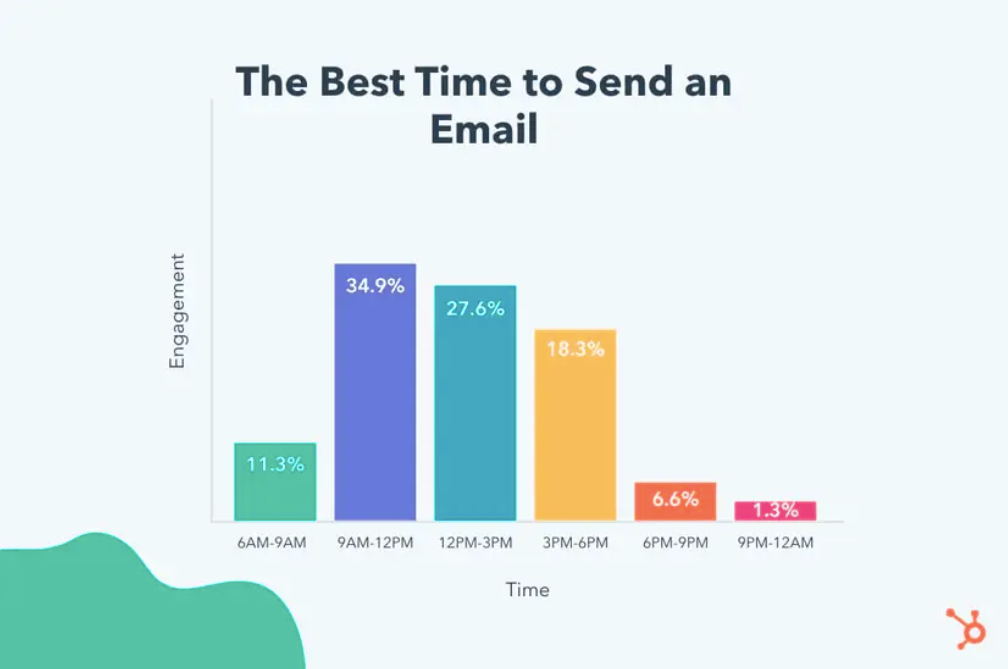
Stat: 10 AM on Tuesdays and Thursdays has the highest open rates.
2. Know Your Audience Beyond Basics
There is more to your audience than their age and where they live. Uncover more details:
What problems do they encounter?
What type of content attracts them?
When are the most suitable times for them to engage with the content, and how do they wish to consume it?
Note: You can gather information about the behavior patterns of specific users using Google Analytics, social media insights, and customer surveys. |
3. Remember Mobile First Design
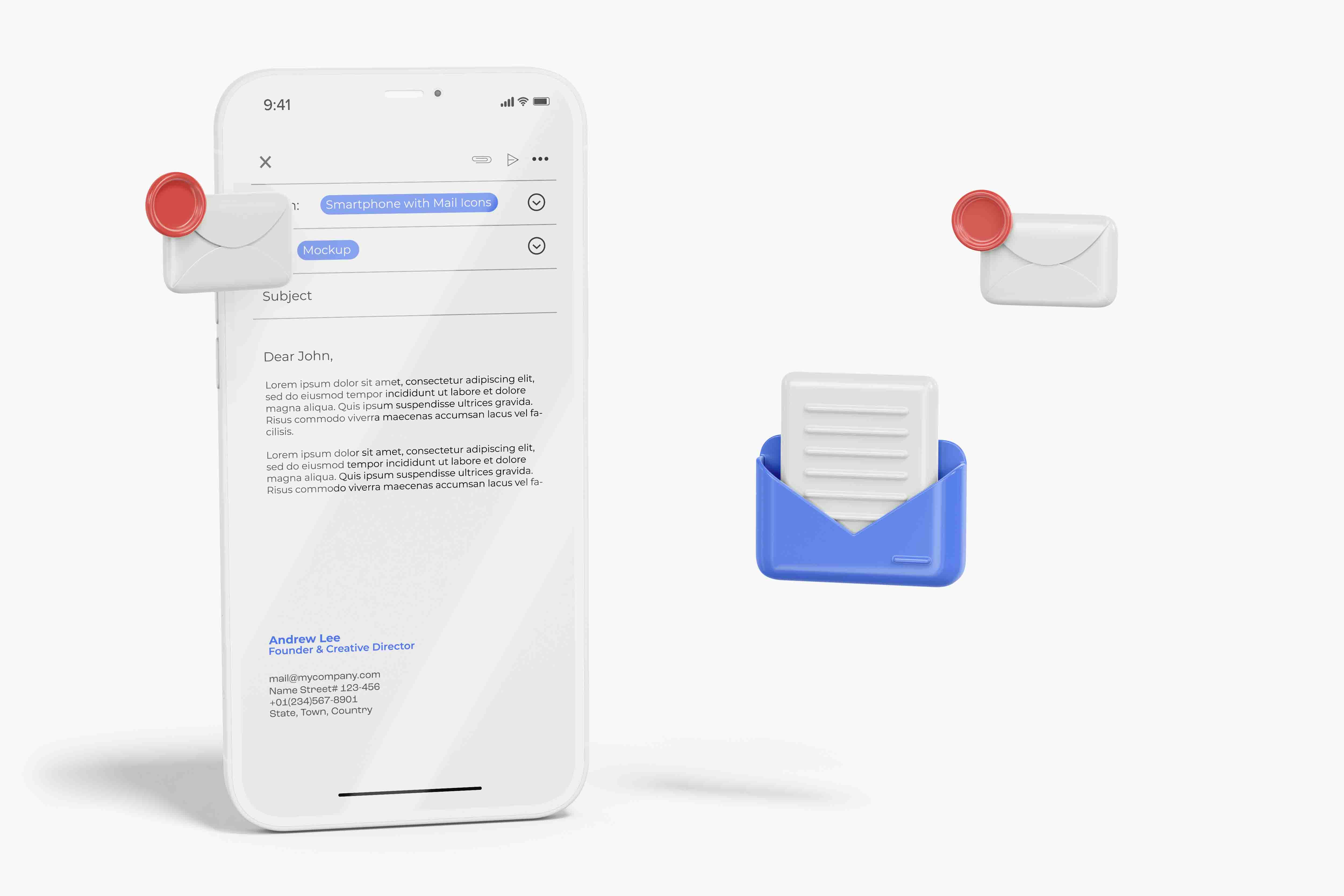
Roughly 50% of customers or readers will always prefer mobile devices. Losing mobile optimizations will mean losing readers.
Single Column to Enhance Readability
Clickable buttons instead of tiny links
Scannable paragraphs
4. Selecting Correct Email Format & Content Type
Not every newsletter is created equal. Choose the right format for your business needs:
Informative (Tips, industry updates, how-to guides)
Promotional (Launching of new products, special deals)
Engagement (Polls, surveys, community updates)
Create Subject Lines & Preview Text That Users Cannot Ignore
The subject line will determine whether the email gets picked up or ignored. Make use of six power words to get quicker results and avoid being caught in AI detectors.
Here’s the most effective method: - Instead of “Our Latest Bogs is Out!” consider “ 5 Growth Hacks You Need Today." |
5. Choosing The Right Email Marketing Tool
A reliable email tool simplifies everything from automation and personalization to performance tracking. Here are a few great options:
EzyCourse – Best for online education businesses
Mailchimp – Great for small firms
Brevo (Formerly Sendinblue) – Best for automation
ConvertKit – Perfect for authors and bloggers
Hubspot – Perfect for enterprise solutions
6. Exclusivity and Personalization
Irrespective of your list or market segmentation, generic emails will never help.
Interests (Tech vs. Fashion vs. Finance)
Purchase history (First timers vs. Regulars)
Engagement (Active subscribers vs. Dormant ones)
7. Optimizing the User Experience (Really)
Hiding the “unsubscribe” button means ruining your sender repute. Rather, consider allowing users to opt down to receive fewer marketing offers.
Also, choose what content they want in emails.
8. Avoiding Spam Markings
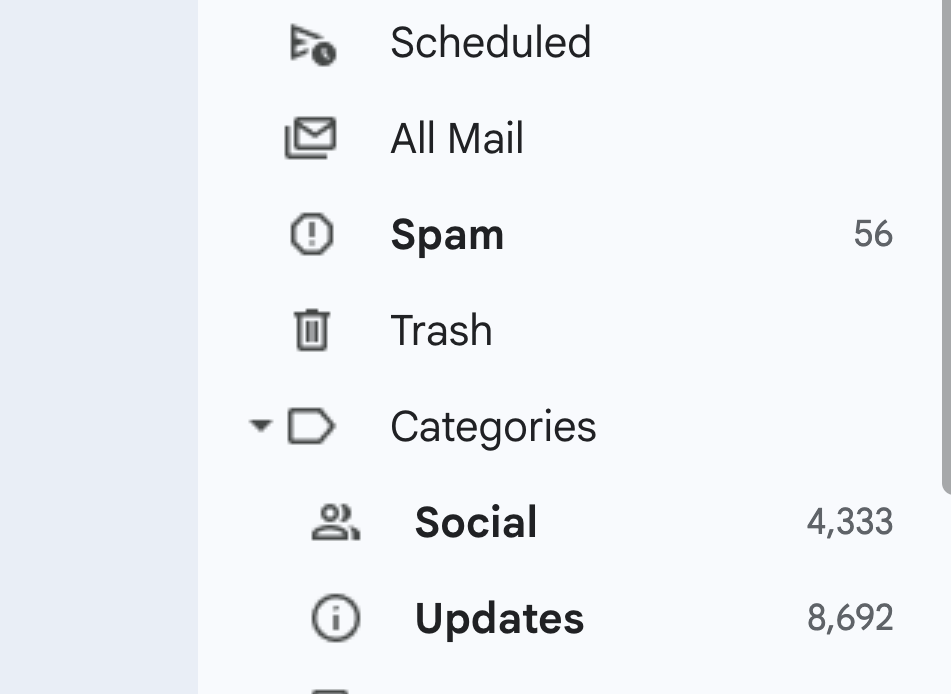
In order to keep your email out of the clutter, respecting permission-based email lists is crucial conservatively.
No free-handed buying lists
Hiding spam trigger hooks [FREE, GUARANTEED, URGENT]
Read more: High-Conversion Marketing Funnel Templates To Turn Leads Into Customers
How to Make an Email Newsletter: Easy 9 Steps
There are 9 simple steps you can follow to create a newsletter people will want to read. Let's talk about it:
Step 1: Get things Straight; Why are You even Making this Newsletter?
Before you even get to colors or content, stop and ask yourself, Why do I want to create a newsletter? The answer will inform everything you do next.
Have you been working to grow your audience?
Promote a new product?
Provide tips in your area of expertise. From tone to frequency, clarify your newsletter goal.
Step 2: Who Are You Talking To, Really?
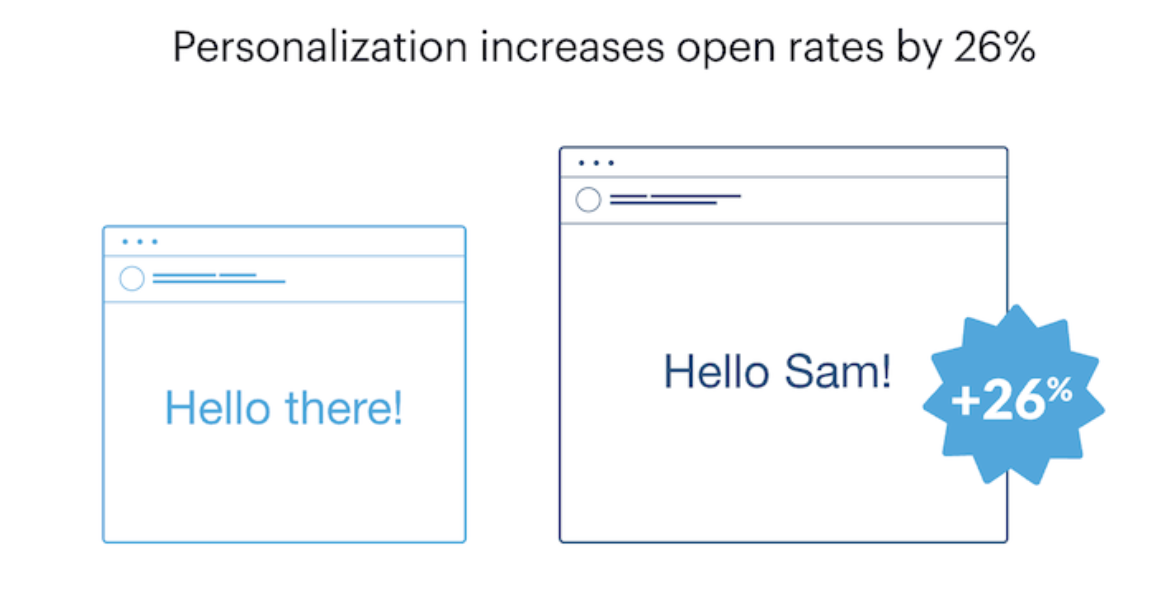
Now, let’s focus on your audience.
You have the basic information — age, where they live — but look deeper.
What are their pain points?
What keeps them up at night?
What is their preferred way to consume content?
The better you know your audience, the more relevant and engaging your content will be. Employ tools such as Google Analytics, social media insights, and surveys to collect data.
PRO TIP: Appeal to your audience on a personal level. Address their needs and wants directly. |
Step 3: The Tool That Will Make Your Life Easier (Hint: An Email Marketing Platform)
Hooray, you figured out your purpose and audience;
Now, you need a tool that’ll make the whole process smoother. Luckily, you don’t have to be a genius to make beautiful and effective newsletters. Don’t know how to make an email newsletter, perhaps you don’t need to know it manually. Choose a platform that comes with pre-built email newsletters!
Consider platforms such as
EzyCourse
Mailchimp
Brevo (formerly Sendinblue)
or ConvertKit
They have user-friendly templates and easy automation and tracking. Each has its pros and cons.
However, it is a great way to establish a relationship with your subscribers by sending welcome emails.

Step 4: Your Subject Line — The Primary (and Most Important) Impression

How do you keep subscribers from scrolling and opening their emails? In this case, the subject line is crucial.
It’s the first thing they'll see, and it can make or break the success of your email.
Short and sweet, under 50 characters if you can.
Use strong language such as “Exclusive,” “Limited Time,” or “Don’t Miss Out!”
Add a touch of curiosity to get them interested: “3 Secrets to Growing Your Business in 2025!”
Personalizing your subject line can increase open rates by 26%. So, talk directly to your reader or mention something they've seen before.
Step 5: Write Content That Addresses Your Readers’ Needs
As soon as they open your mail, they should hook happily to your content. Whatever you write should serve a purpose, be valuable, and be relevant to your audience, whether you show products or give tips.
For instance:
If you’re in e-commerce, offer styling tips along with new product drops.
If you’re a service provider, provide actionable advice or a case study of how your service helped someone.
62% of consumers would rather receive informative emails than promotional ones (HubSpot). The tension between education and promotion must be balanced. |
Step 6: Make Sure Your Design is Clean, Simple, and Easy to Read
Nobody wants a cluttered, difficult-to-read email.
That’s why, your newsletter design should be visually attractive and easy to navigate through. Use clear headings, short paragraphs, and bullet points to break text up.
Mobile optimization is critical; 43% of emails are opened on mobile devices (Litmus). |
Make buttons large and clickable, especially your call to action. As a result, your content will be easier to swallow. This will, in turn, encourage readers to visit your website.
Always preview your email on mobile before sending it. It needs to look good, whatever device they’re using.
Step 7: Add a Compelling Call to Action (CTA)

Did you click? Haha! It’s an example of CTA!
After you’ve published your high-value information, what do you want your readers to do next? It is here that you need to include your call to action (CTA).
It should be easy to click over to your site, buy a product, or register for an event.
CTAs that inspire action, like “Shop Now” or “Learn More.”
Position your CTA so that it is conspicuous and easy to click.
Pro Tip: Make your CTA as specific as you can because the more specific you are, the better the conversion rates. Instead of “Click Here,” consider “Get 20% Off Your First Order.” |
Step 8: Test, Test, Test, And Test Some More

Now time for the fun part — A/B testing!
Only through testing various elements will you know what works. Start with your subject lines and then test CTAs, images, or even the time you send your emails.
Test these elements:
Subject lines (Urgency Vs. Curiosity)
CTAs (“Get Started” vs. “Learn More”)
Visual vs. plain text emails
A single email test can boost your revenue by 37% (Omnisend). So don’t skip this step — it’s how to optimize your newsletter to get the best results! |
Step 9: Review the Results and Adjust for Next Time
The last step is pure learning. After your newsletter goes out, don’t just roll on to the next project.
Well, there are numbers involved: open rates, click-through rates, conversions—the metrics-enabled approach.
Use analytics tools to measure:
Open rates: Are people opening your emails?
Click-through rates: Are they taking action after opening?
Conversion rates: Are they purchasing, signing up, or engaging?
Use this data to write better newsletters in the future.
By the end of this 9-step process, you will have a newsletter that not only informs but connects with your audience. It’s about value, consistency, and optimization.
So go for it, hit send, and see your engagement fly!
The Do’s and Don’ts Of Building The Perfect Email Newsletter
In true words, Email newsletter building isn't rocket science, but it does take some planning. To help you crush it, here’s a fast list of do’s and don’ts that’ll steer you toward success.
Do’s About Email Newsletter (You Must Know)
Make It Personal: Use your subscribers’ names. It helps them feel valued, as personalization goes a long way.
Deliver Real Value: Be of use, interesting, or educational — anything your audience can get value out of.
Don’t treat all your subscribers the same: Segment Your Audience Split them into groups based on similarities so that you can send more targeted emails.
Optimize for Mobile Optimize for Mobile: With so many people reading emails on their phones, make sure your design looks great on mobile, too.
Use Clear CTAs: It’s simple; don’t leave your reader hanging. Include strong, persuasive calls to action.
A/B Test: Instead of relying on guesses to tell you what works, try different subject lines, different layouts, or different CTAs to see which one your audience responds to.
Keep it Short and Sweet: People are busy. Deliver your message through short, interactive, and action-oriented content.
Use Analytics: Instead of guessing how your emails are doing, track your open rates, clicks, and conversions to find out what’s working.
Create Consistency: Send newsletters regularly. It establishes trust and allows your readers to engage.
Don’ts About Email Newsletter (Must Avoid)
Avoid Spamming: No one enjoys receiving a slew of emails. Watch your frequency so you don’t piss off your subscribers.
Don’t Overlook Subject Lines: The subject line is the first thing people see, so make it count. Make sure it is engaging and comprehensible.
Do Not Clickbait: Be honest. Deceptive subject lines can cause people to lose interest and hurt your credibility.
Don’t Make It Difficult to Unsubscribe: Respect your audience. Be sure that there is a simple way for them to opt-out if they desire to do so.
Don’t Skimp on Design: Design provides a strong boost. Make sure it is organized, easy on the eye, and not cluttered.
Avoid Proofreading: Typos can make you sound unprofessional. Read before you hit send.
Don’t Send the Same Thing to Everyone: One-size-fits-all doesn’t work. Be sure to personalize your emails so they are relevant to each subscriber.

What Are The Benefits Of Email Newsletters?
Actually, businesses rely on email newsletters to engage, inform, and convert users. Subscribers receive emails directly in their inbox, creating a personal and uninterrupted relationship.
Also, research shows that segmented emails can boost revenue by 760%, and personalized subject lines can boost open rates by 50%.
let’s see why email newsletters are essential for any brand:
They Keep Your Brand Top-of-Mind
Regular emails ensure that subscribers remember your brand without feeling burdened. Newsletters offer friendly, non-intrusive communication that keeps your business fresh in their minds.
They Generate Sales Without Huge Costs
Paid advertising requires a large budget, but email newsletters can drive revenue more cost-effectively. With them, companies can nurture leads and convert them into customers.
They Build Personal Connections
The power of email is that it allows brands to communicate directly with their audience in a way that social media cannot do. A well-crafted email makes subscribers feel valued and engaged with your brand.
They Increase Website Traffic
By including valuable content and links, newsletters serve as a bridge between your audience and your website. Thus, they drive more traffic and engagement.
They Encourage Repeat Customers
Consistent engagement with subscribers builds customer loyalty. By reminding them of your products and services, newsletters boost repeat purchases.
They Work Across All Industries
E-commerce, finance, coaching, SaaS, local services, and SaaS all benefit from email marketing.
Example: B2B companies that send educational emails generate 50% more sales-ready leads (HubSpot), proving the power of consistent communication. |
They Help You Own Your Audience
Unlike social media platforms that control visibility through algorithms, you own an email list. With this, you can access your audience directly.
They Offer Valuable Customer Insights
Open rates, click-through rates, and engagement metrics show how customers behave. It allows you to refine your marketing strategies.
Top 3 Email Marketing Platforms for Creating a Powerful Email Newsletter
From our discussion above, you already know that email newsletters are excellent for boosting brand awareness and conversions.
Fortunately, with the right platform, you can create, automate, and analyze your emails. Here are the top three email marketing platforms that are easy to use, feature a powerful feature set, and provide excellent deliverability.
1. EzyCourse
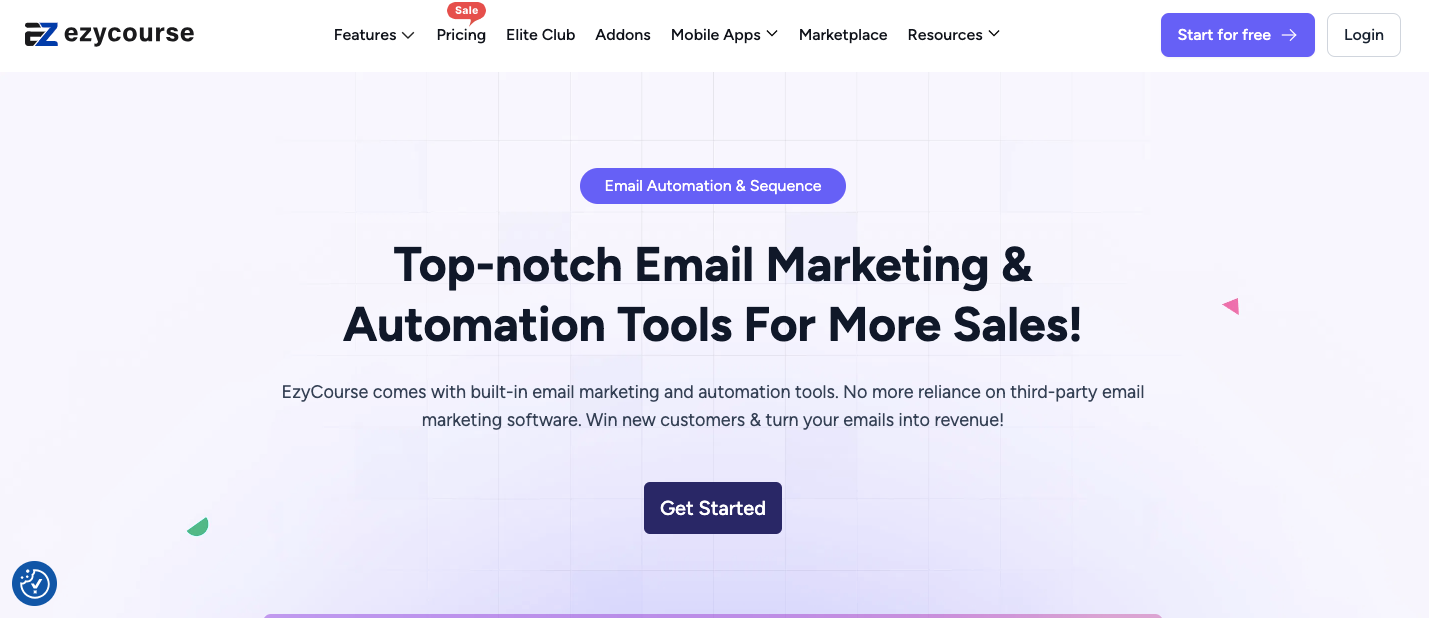
When you're creating an online course, you've put in a lot of effort to build your course.
But now you need to reach the right people to enroll them. In this case, EzyCourse could be the turning point for your email marketing campaign.
Actually, EzyCourse is designed to make your email marketing efforts as smooth and efficient as possible.
Also, let’s start with automation.
With this feature, you can create sequences of emails that are sent automatically based on your audience's behavior.
When someone signs up for your course or shows interest, you can send them a personalized email at the right time.
But that’s not all.
With segmentation, you can divide your audience into specific groups based on their actions or interests. You can send tailored emails to the right people, increasing conversions.
However, ezyCourse offers a huge library of ready-to-use email templates.
It means you don’t need to be a designer to create professional-looking emails. You can also add customized tags to personalize your emails further.
The platform also supports push notifications, which is an excellent way to alert your audience about important updates, special offers, or new courses.
Plus, with forms built right into the platform, it’s easy to collect sign-ups and engage with potential customers.
All these features are combined in EzyCourse, so you can concentrate on what matters most-creating and delivering awesome courses.
There are also some essential features of EzyCourse that you should know about:
SCORM Compliance
Multi-Lingual Support
Gamification
Mobile App
Advanced Quiz & Assessment
Course Marketplace
Certificate Generation
Video Conferencing
Customizable Website Templates
Student Analytics
EzyCourse PricingBasic – $45/month Pro – $125/month Unlimited – $199/month Elite – $299/month |

You’ll Like About EzyCourse:
Comprehensive toolset for course creation and marketing.
Built-in email marketing and automation tools.
Mobile app builder for on-the-go learning.
Gamified learning features to enhance user engagement.
AI-generated subtitles for accessibility.
DRM solutions for content protection.
Multi-currency pricing options for global reach.
Customizable templates and branding.
Real-time analytics and reporting.
Community-building features for enhanced interaction.
You May Dislike:
Can be overwhelming for beginners due to extensive features.

2. HubSpot
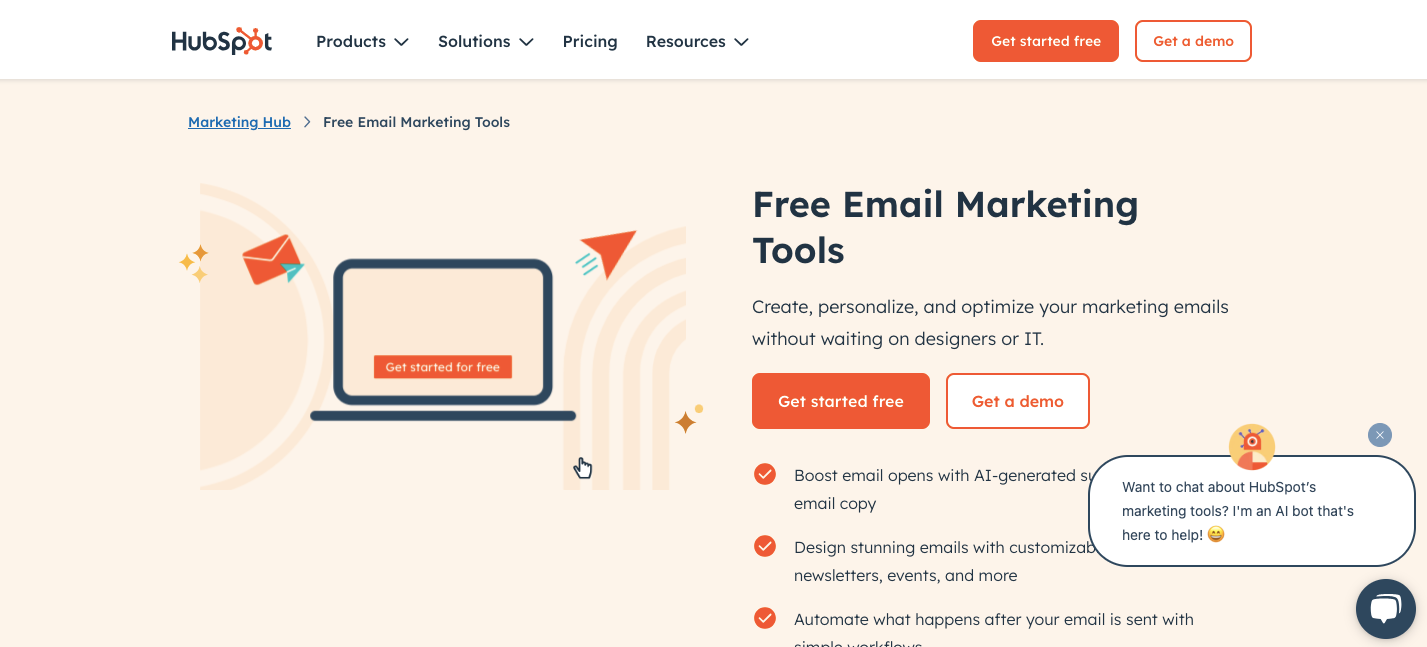
Actually, HubSpot's email marketing tools make your email campaigns simple, effective, and professional without extra work from designers or developers.
Using their drag-and-drop editor, you can create beautiful emails that are optimized for all devices. Also, HubSpot makes it easy to launch a newsletter or an event campaign with customizable templates.
It has a number of standout features, including personalization.
By using CRM data, you can tailor emails to each subscriber, increasing their likelihood of opening and engaging.
In fact, each recipient can have customized subject lines, links, and calls to action.
For example, using a contact's name or lifecycle stage in the subject line can increase open rates.
You can also automate follow-up actions based on how recipients engage with your emails with HubSpot. As a result, you can automatically send follow-up emails based on clicks or opens.
However, using HubSpot's A/B testing and analytics, you can track email performance and improve campaigns.
It helps generate email copy and subject lines using HubSpot's AI-powered tools, saving you hours.
Using these tools, you can send more engaging, conversion-driven email marketing campaigns. Plus, they integrate easily with HubSpot's other marketing features like landing pages, forms, and ads.
HubSpot Marketing Hub PricingProfessional Plan: $800/month, Includes: 3 seats, 2,000 contacts, and features like lead scoring, automation, social media tools, and custom reporting. One-time onboarding fee: $3,000. Enterprise Plan: $3,600/month Includes: 5 seats, 10,000 contacts, and advanced features like multi-touch attribution and AI insights. One-time onboarding fee: $7,000. Additional seats: $45/mo (Professional), $75/mo (Enterprise). |
You’ll Like About HubSpot:
Comprehensive marketing suite with email marketing as a core feature.
User-friendly drag-and-drop editor.
AI content generation for personalized emails.
Strong CRM integration for seamless workflows.
Strong email automation and workflows.
Extensive library of pre-built templates.
Excellent customer support and resources.
Integration with a wide range of third-party applications.
Scalable for businesses of all sizes.
You May Dislike:
Interface may be complex for beginners.
Limited customization in lower-tier plans.
Requires training to maximize features.
Occasional issues with email deliverability.
3. Mailchimp
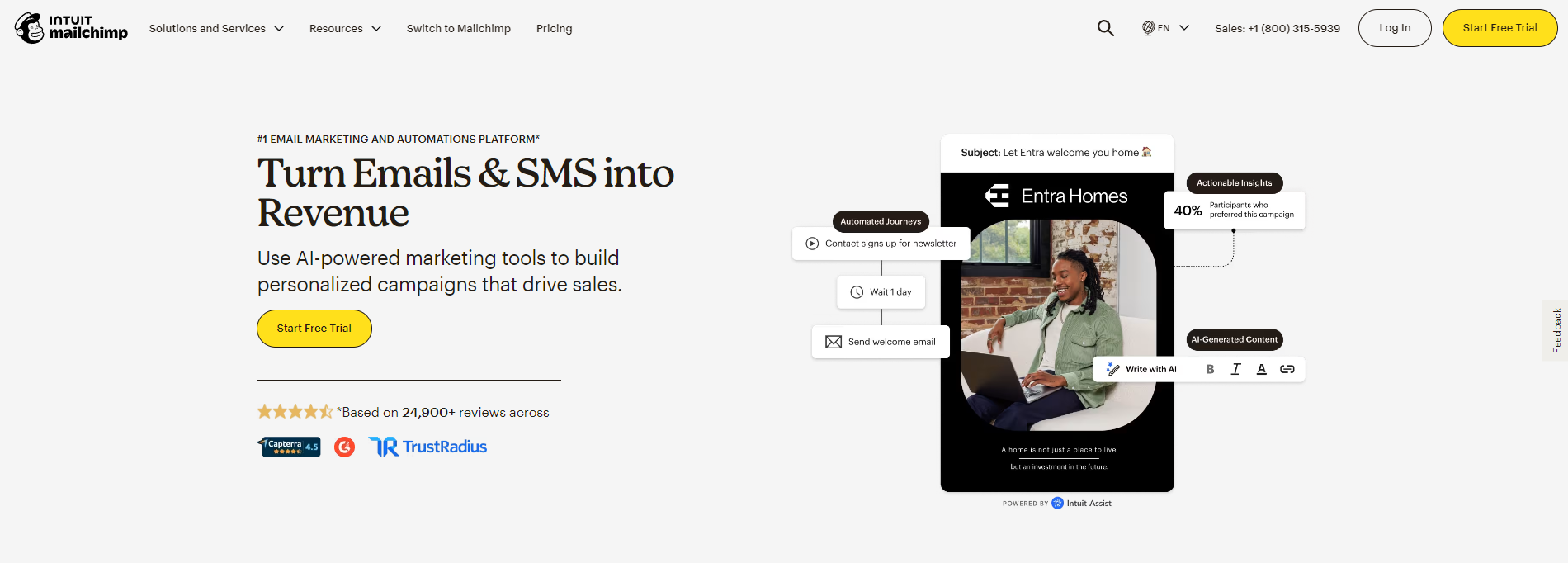
Let's say you run a small business and are looking to grow your customer base. It can be not easy to reach a consistent audience if you have a great product.
Fortunately, Mailchimp is here to help—a powerful, user-friendly email marketing platform.
No extraordinary skill is required to create stunning, customizable email templates with Mailchimp.
Do you want to send a welcome email to new subscribers? Set up automation workflows that engage customers at the perfect moment.
Need to fine-tune your strategy? Use A/B testing to discover what resonates best with your audience.
Mailchimp goes beyond email—it helps you build landing pages, run social media campaigns, and even boost e-commerce sales.
Its audience segmentation ensures that your messages reach the right people, increasing engagement and conversions.
Plus, detailed analytics provide insights into campaign performance, helping you make data-driven decisions.
No matter what size your business is, Mailchimp's intuitive interface makes marketing effortless.
Mailchimp Email Marketing PricingStandard: $10/month for 500 contacts, 6,000 emails/month. Includes AI features, automations, and custom templates. Premium: $175/month for 10,000 contacts, 150,000 emails/month. Includes migration support, priority support, and unlimited audiences. Essentials: $13/month for 500 contacts, basic email features, and limited reporting. Free: $0/month for 500 contacts, with basic features. |
You’ll Like About Mailchimp
Easy-to-use interface with a drag-and-drop editor.
Extensive features for email marketing and beyond.
Strong analytics and reporting tools.
Robust automation capabilities.
Customizable templates for various needs.
Audience segmentation for targeted marketing.
Integration with numerous third-party applications.
E-commerce tools for online stores.
Social media marketing features.
Comprehensive support and resources.
You May Dislike:
Pricing can become expensive as your email list grows.
Limited features in the free plan.
Occasional issues with email deliverability.
Limited phone support for lower-tier plans.
So, Which One Is The Best Email Marketing Platform?
As you are probably aware, email marketing is one of the most vital aspects of business in today's world. In that case, EzyCourse is the smartest choice, to be honest.
In true words, this isn't just an email tool; it's an entire ecosystem for online businesses. You can easily create targeted, engaging, and effective emails with EzyCourse's powerful automation, segmentation, and templates. |
Besides emails, it includes push notifications, a website builder, course creation tools, community features, and membership management options. By keeping everything in one place, EzyCourse saves time and boosts efficiency.
But how do you create an email automation campaign with EzyCourse?
How to Make an Email Newsletter with EzyCourse
Well, it’s super easy! Let’s see how:
Step 1: Go to the Dashboard
No worries if you are not an EzyCourse user. Just sign up & get started with a free trial. If you are already an EzyCourse user, you may be familiar with this:
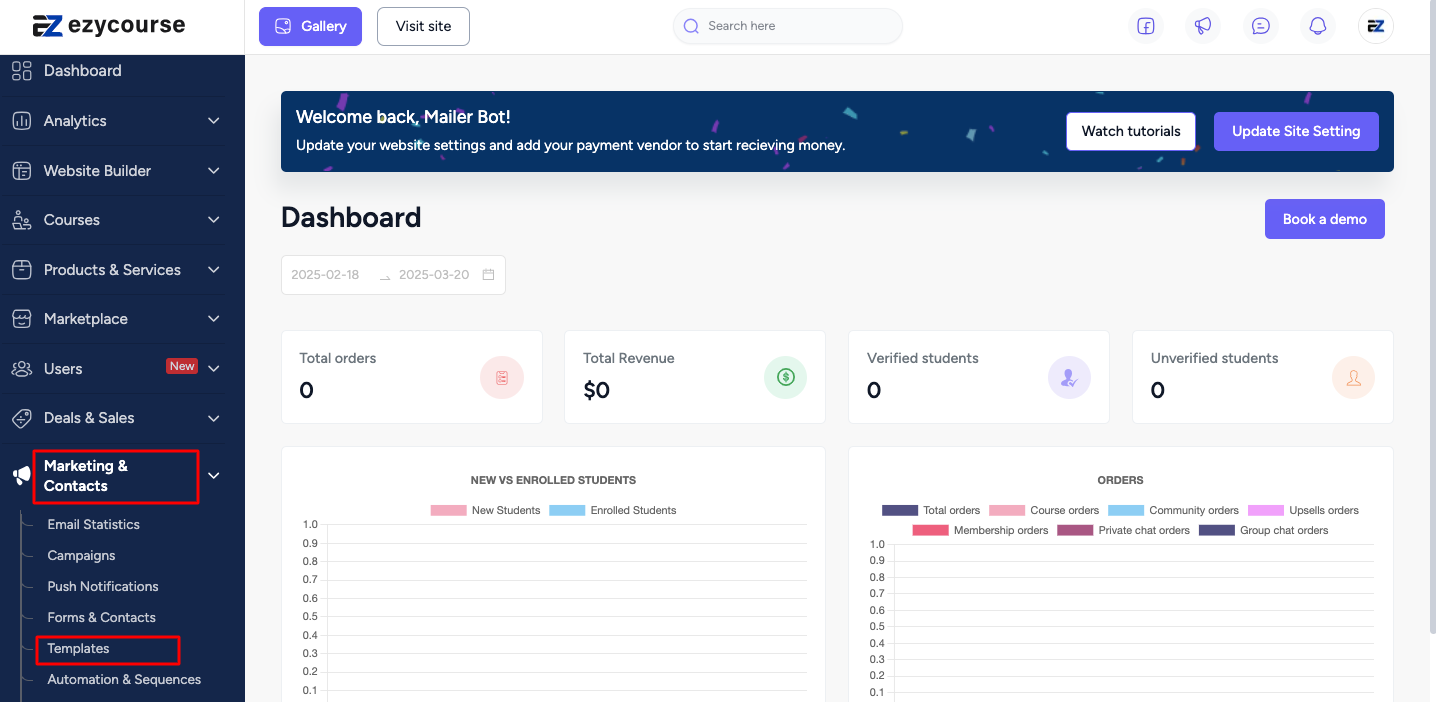
Navigate to Marketing & Contacts → Templates.
Step 2: Create an Email
You can either create emails from pre-built templates or create on your own.
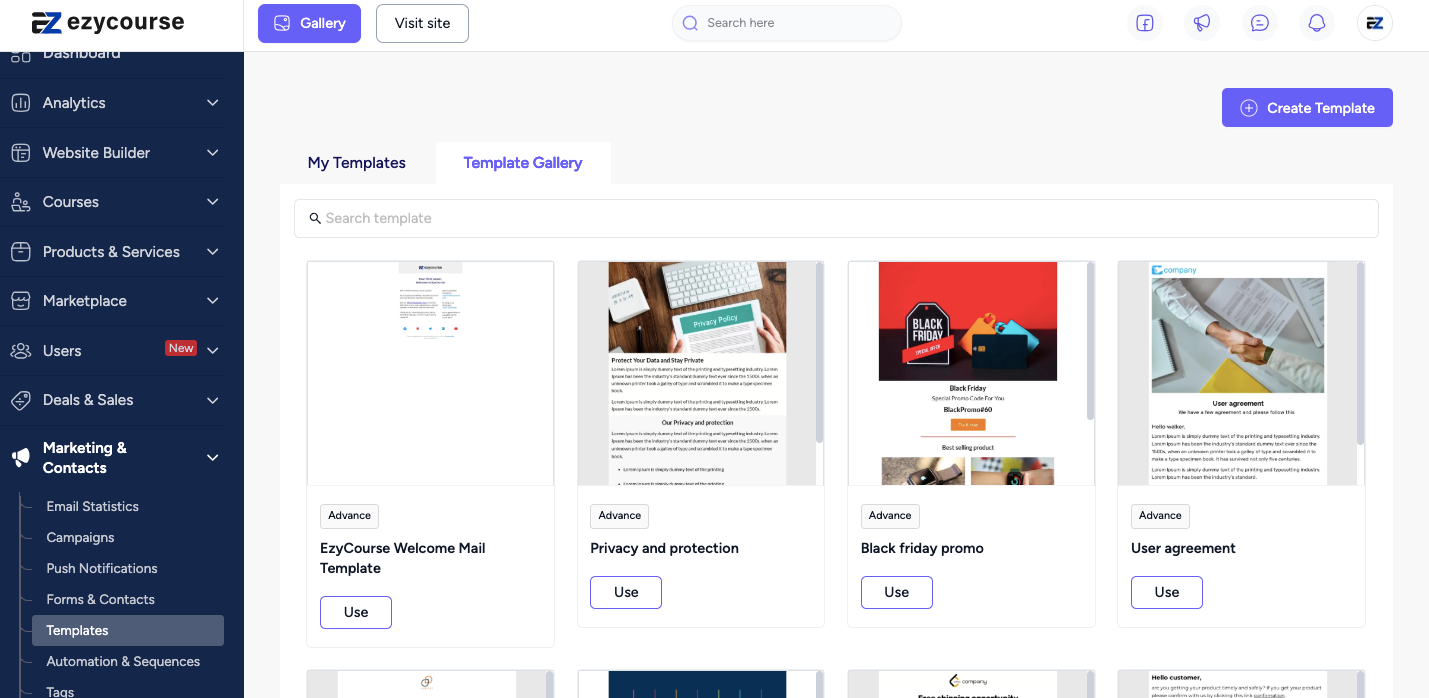
For example, you can edit and save the email like this:
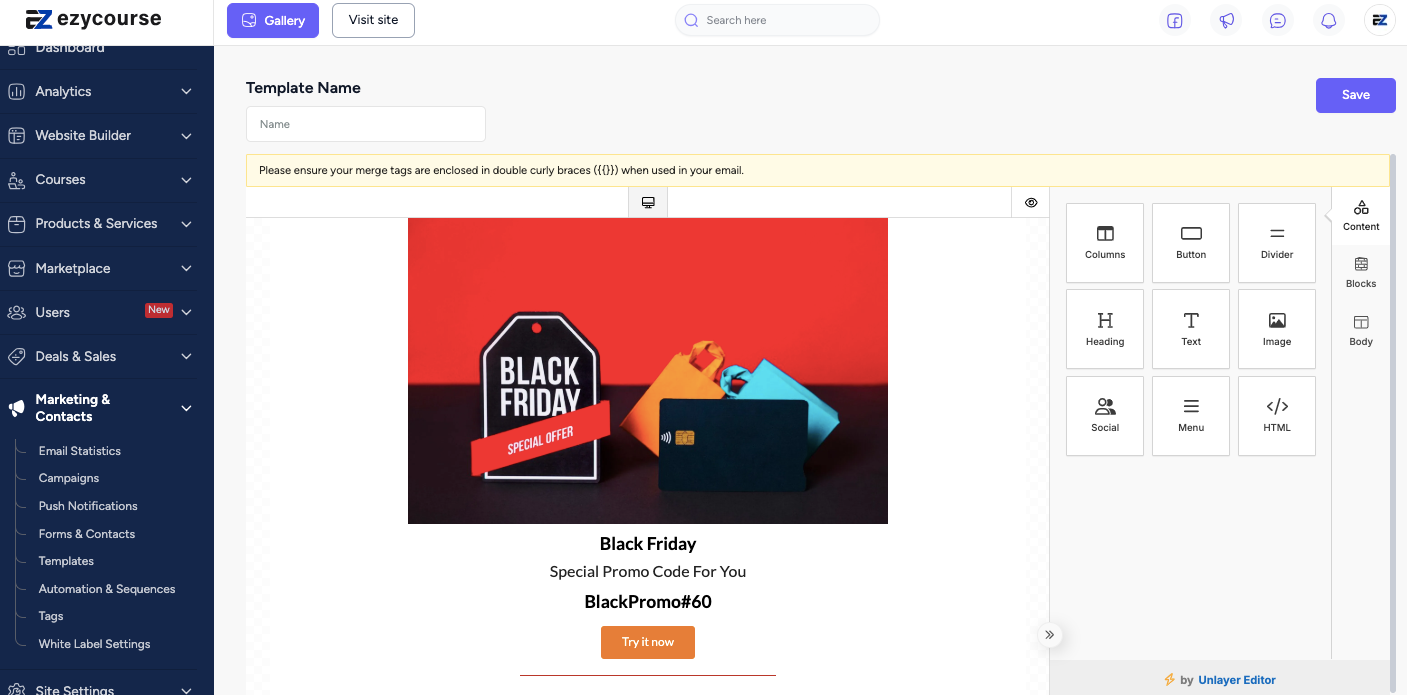
Step 3: Create an Email Campaign
Go to Campaigns, and click on the start new campaign button.
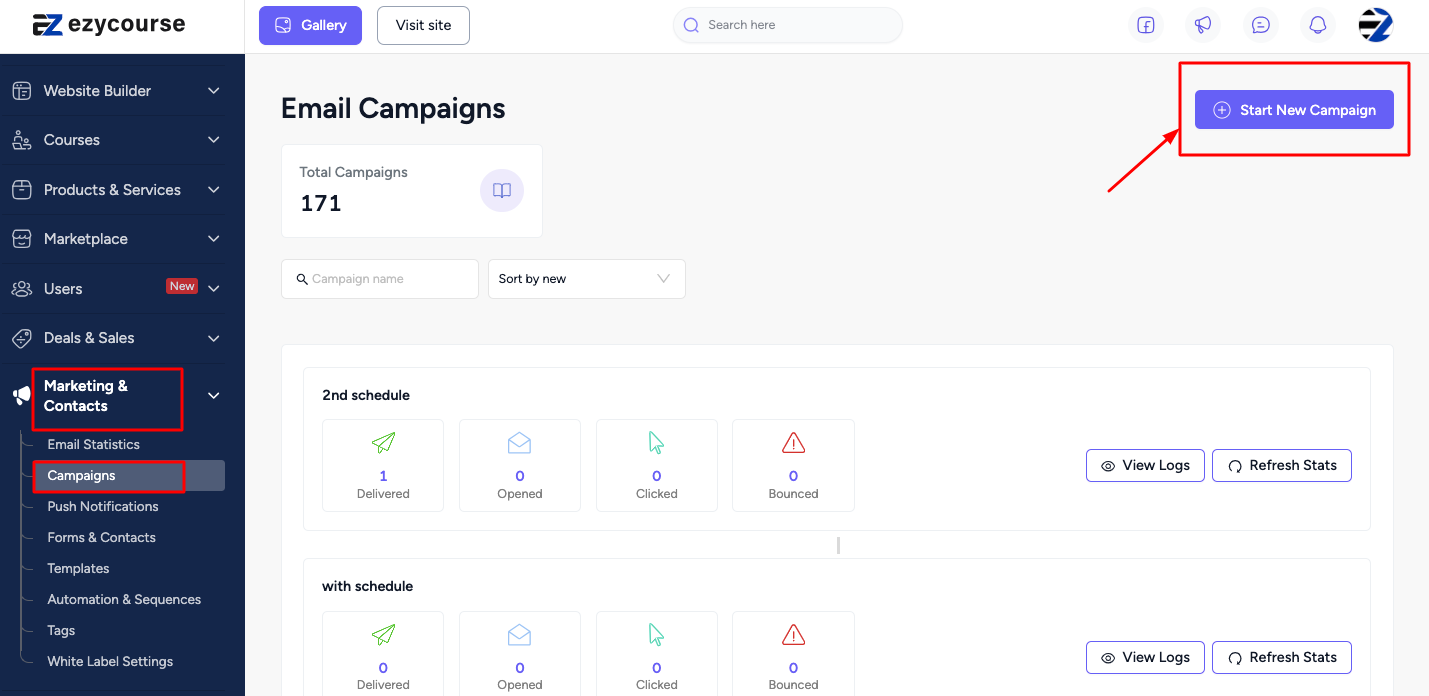
You will see the option to start your campaign once all the fields are filled up:
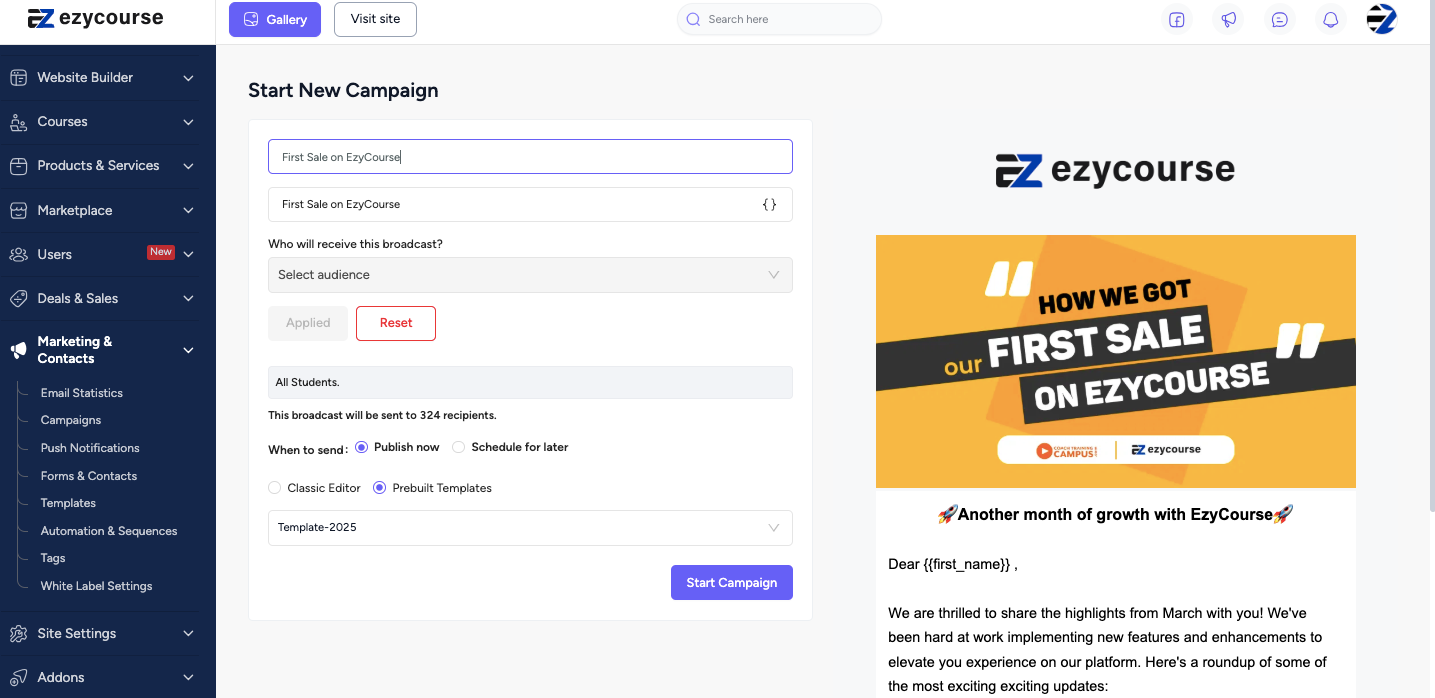
Once you have started the campaign, that’s all!
Step 4: Set Email Automation & Sequence
Email Automation & Sequence. This is your control center for all automated campaigns. Click the "Create Automation" button to start setting up your campaign.
Enter a compelling subject line. Use merge tags to personalize emails with names, course details, or other data.
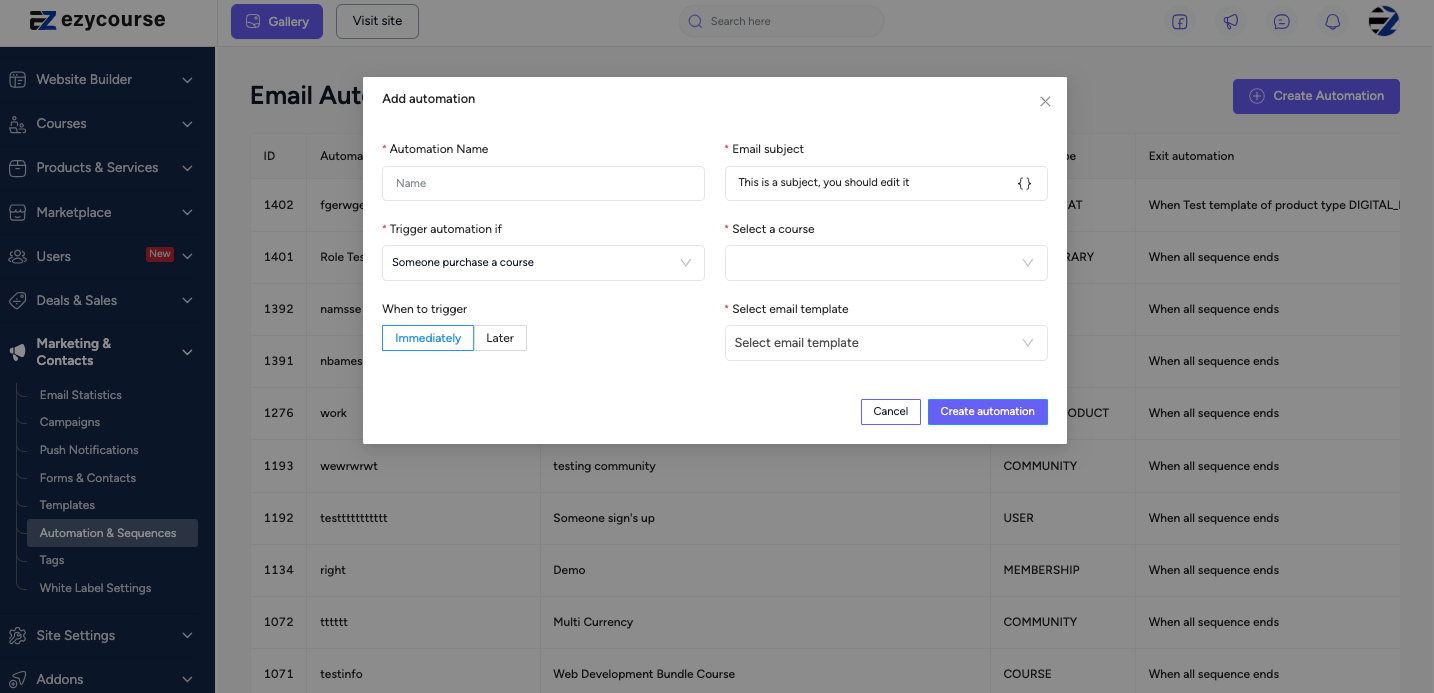
While doing so, you can:
Choose a Trigger Event: Decide what action will trigger the email—form submissions, purchases, or other platform interactions.
Set the Timing: Send emails immediately or schedule them minutes, hours, or days after the trigger.
Select an Email Template: Pick a pre-designed template or customize one for a professional look.
Finalize & Launch: Click "Create Automation" to activate your campaign.
Edit & Optimize: Need changes? Update the sequence or create a new automation to reflect edits.
What’s more, EzyCourse lets you see email statistics and set push notifications. So, there are plenty of things to play with this platform!

Final Verdict on How to Make an Email Newsletter…
You check your inbox and see an email you're excited about. Maybe it’s a smart tip, an exclusive deal, or just a relatable story that makes you smile.
That's what a great email newsletter does: it engages, converts, and connects without feeling spammy.
The right newsletters aren’t just about selling. They build trust, spark conversations, and keep your brand top-of-mind. It's important to be consistent no matter what you're sharing, whether you're offering value or just checking in.
So, as you compose your next email, ask yourself: Would I enjoy reading this? If the answer is yes, your audience will too.
Keep it real and valuable, and watch your emails turn readers into loyal fans.

